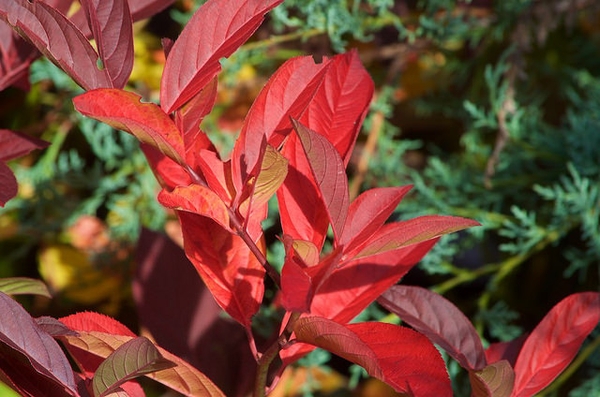Gardening in October in Transylvania County
go.ncsu.edu/readext?739282
en Español / em Português
El inglés es el idioma de control de esta página. En la medida en que haya algún conflicto entre la traducción al inglés y la traducción, el inglés prevalece.
Al hacer clic en el enlace de traducción se activa un servicio de traducción gratuito para convertir la página al español. Al igual que con cualquier traducción por Internet, la conversión no es sensible al contexto y puede que no traduzca el texto en su significado original. NC State Extension no garantiza la exactitud del texto traducido. Por favor, tenga en cuenta que algunas aplicaciones y/o servicios pueden no funcionar como se espera cuando se traducen.
Português
Inglês é o idioma de controle desta página. Na medida que haja algum conflito entre o texto original em Inglês e a tradução, o Inglês prevalece.
Ao clicar no link de tradução, um serviço gratuito de tradução será ativado para converter a página para o Português. Como em qualquer tradução pela internet, a conversão não é sensivel ao contexto e pode não ocorrer a tradução para o significado orginal. O serviço de Extensão da Carolina do Norte (NC State Extension) não garante a exatidão do texto traduzido. Por favor, observe que algumas funções ou serviços podem não funcionar como esperado após a tradução.
English
English is the controlling language of this page. To the extent there is any conflict between the English text and the translation, English controls.
Clicking on the translation link activates a free translation service to convert the page to Spanish. As with any Internet translation, the conversion is not context-sensitive and may not translate the text to its original meaning. NC State Extension does not guarantee the accuracy of the translated text. Please note that some applications and/or services may not function as expected when translated.
Collapse ▲ October is a wonderful time for being outside and working in the garden. The glorious fall colors are everywhere and the weather is cooler and drier, but still not too chilly.
October is a wonderful time for being outside and working in the garden. The glorious fall colors are everywhere and the weather is cooler and drier, but still not too chilly.
The average first frost date in Transylvania County is towards the end of the month, often depending on your elevation. Transylvania County is widely known for a unique weather phenomenon known as the “thermal belt”. The thermal belt refers to a mountainside zone where frost or freezing temperatures are less likely to occur than they are at either higher or lower elevations. A thermal belt is formed on a mountainside and not on flat land. Heat absorbed by the soil during the day radiates from the soil surface of the mountain at night and rises into the air.
The radiation of heat actually makes the air closest to the soil surface colder than the free air. The cold air situated near the ground then moves down into the valley below as cold air sinks. This movement of cold air to the valley forces what warm air there is in the valley upward. During the night there is a continuous interchange of cold air from the mountain surface and warmer free air from the valley. Meanwhile, there is a continuous movement of air above the mountain ridges. This rapidly moving air traps the rising warmer free air. Thus, a band of warm air is created with colder air above it and colder air below it. This band is a thermal belt. Gardens located in a thermal belt will normally have a longer growing season between killing frosts.
Below is a list of gardening tasks to do now with links for more information on each topic. If you have questions or need more information, please contact N.C. Cooperative Extension of Transylvania County at 828.884.3109 send us an email.
Fertilizing
- Do NOT fertilize trees or shrubs in August, September, October, or November. Fertilizing trees and shrubs
- Fertilize cool-season lawns if not done in September. Lawn Information
Planting
- Plant spring-flowering bulbs late in the month. Planting bulbs
- Continue to plant pansies.
- Plant and divide herbaceous perennials. Planting perennials and bulbs
- Plant container-grown trees and shrubs. Planting trees and shrubs
- Direct sow seeds of hardy annuals; larkspur, poppy, Drummond phlox, sweet peas, cornflower, etc., where they will bloom in the spring.
- Dig up tender tubers and corms including dahlia, cannas, caladium, gladiolus, and tuberous begonias about the time of the first killing frost. Store in a cool dry location and do not allow them to freeze. Storing tender tubers
- Plant lettuce, green onions, carrots, radishes, and most leafy greens inside the cold frame for winter and early spring harvest. A Beginner’s Guide to Vegetable Gardening
- Plant garlic cloves. Growing garlic
- Plant cover crops on cleared garden areas to prevent erosion over the winter and provide green manure in the spring. Cover crops for home gardens
Pruning
- Cut back herbaceous perennials after frost has killed the tops or leave them for wildlife. Fall cleanup
- Prune out all deadwood or diseased wood from shrubs, trees, and roses. Pruning woody ornamentals
- Root prune any trees or shrubs you plan to move next spring. Transplanting trees and shrubs
Managing Pests and Diseases
- Monitor for insects and if needed, spray the following fall vegetables for insects: broccoli, cabbage, and cauliflower (worms), squash (borers). Vegetable pests control
- Continue to spray rose bushes. Fungus on roses
- Control trumpet creeper and blackberry by spraying the recommended herbicide.
- Remove Japanese stiltgrass before it blooms and goes to seed. Controlling stiltgrass
Lawn Care Lawn Information
- If not done in September:
- Core-aerate cool-season lawns if needed.
- Keep newly seeded areas watered.
- Keep tree leaves from collecting on your lawn.
- Fertilize cool-season lawns.
- Apply lime if required.
Propagation
- Root cuttings of most flowering shrubs can be propagated by means of hardwood cuttings. Propagation by stem cuttings
- Remember to check the cuttings you put in a cold frame for winter. This should be done twice a month. Water as needed.
Miscellaneous To Do
- Pick up all fallen fruit and remove any left hanging on trees. Clean up all leaves under fruit plants and remove from the garden. Good sanitation helps prevent the carry-over of diseases and insects.
- Remove crop residue as the garden harvest is complete. Destroy, do not compost, if diseased or insects are present.
- Continue to compost leaves and other garden refuse. Composting
- If you have not or do not plan to plant a cover crop, you can till organic material such as ground and decomposing tree leaves into your vegetable garden soil.
- Prepare bird feeders. Backyard birds
- Dig sweet potatoes this month before frost kills the plants. Growing sweet potatoes
- Store your garden pesticides in a secured, dry location that will not freeze.
- Clean spray tanks.
House Plant Care
- Bring houseplants inside before frost if not done already. Check for insect pests and wash plants if found. Houseplants
- Christmas cactus and poinsettia plants need to be located where they will get 12 hours of continuous darkness at 55-65 degrees every night for about six to eight weeks until buds begin to appear. Christmas cactus Poinsettia
- Re-pot your dormant amaryllis bulbs and bring them into the warmth of a south-facing window and begin watering. Forcing amaryllis
- Force spring-flowering bulbs in the dead of winter. Pot the bulbs early this month and place them in the refrigerator. In twelve weeks take them out into the warmth of your home. Forcing bulbs
Plants in bloom and with colorful berries in October:
Franklinia, Washington Hawthorn, American Beautyberry, Burford Holly, Chinese Holly, Foster Holly, Nellie R. Stevens Holly, Nandina, Pyracantha, Aster, Goldenrod, Chrysanthemum




